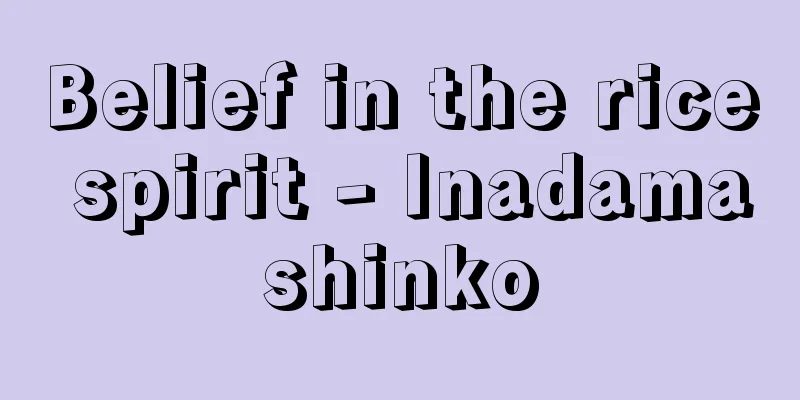pradhāna (English spelling)

|
…Without any action, its action is only the observation (darśana) of the material principle, which is also called prakṛti or pradhāna (self-nature), the only real, eternal, active, non-mental mass. The material principle is composed of three constituents, triguṇa (the three virtues). *Some of the terminology explanations that mention "pradhāna" are listed below. Source | Heibonsha World Encyclopedia 2nd Edition | Information |
|
…活動することなく,その作用はただ物質的原理を観察(ダルシャナdarśana)するのみである。また物質的原理はプラクリティprakṛtiまたはプラダーナpradhāna(〈自性〉)と呼ばれ,唯一の実体であって,永遠で活動性をもち,非精神的な質量因である。物質的原理は三つの構成要素トリグナtriguṇa(〈三徳〉)から成る。… ※「pradhāna」について言及している用語解説の一部を掲載しています。 出典|株式会社平凡社世界大百科事典 第2版について | 情報 |
>>: Pradon, N. (English spelling) PradonN
Recommend
ṣulḥ kull (English spelling) sulhkull
…Akbar also adopted a policy of incorporating the...
Plumularia setacea
Phylum Cnidaria, Class Hydrozoa, Order Leptothecat...
Jean de La Bruyère
1645‐96 French moralist. Born into the middle clas...
Ghiyāth al-Dīn Tughluq
...1320-1413. The third Turkish dynasty of the so...
Rusa deer
A medium-sized deer found on Indonesian islands su...
Epigraphy - higaku (English spelling)
A school of calligraphy that studies the calligrap...
Vladimir-Suzdal Principality
The city's history began in 1108 when Vladimi...
Dawn - Yoake
Around the time of dawn. Since the Kansei calenda...
Cayley, Arthur
Born: August 16, 1821, Richmond [Died] January 26,...
The Song of Roland - The Song of Roland (English)
The oldest epic poem in French literature. It is e...
Kanogawa Typhoon
This was Typhoon No. 22 of 1958 (Showa 33). The n...
Election crime
This refers to various violations of the Public Of...
Mountain Skipper - Miyamaseseri
A butterfly belonging to the order Lepidoptera, f...
Allobroges - Allobroges (English spelling)
A Celtic tribe from Gallia Narbonensis who lived i...
Edo Shipping Wholesaler - Edozumifunadonya
...When the stock association was dissolved in 18...









